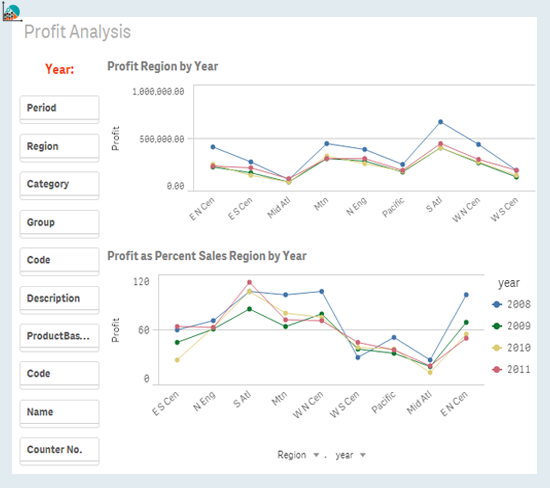Management reporting plays a pivotal role in steering businesses toward success. By providing actionable insights, it empowers decision-makers to track performance, allocate resources effectively, and drive growth. Let’s explore the benefits of management reporting, the best practices, and examples of reports that deliver maximum value.
What is a Management Reporting?
Management defines handling and controlling of different team members in the organization which results in achieving the target. Management reporting is a management control system that provides business information or management reporting can be defined as a data needed by a company manager to run the business.
Management Reporting provides an insight on how company is doing, empowering decision-makers to find the right path to increase operating efficiency and make pertinent decisions to remain competitive.

Why do we need an effective management reporting system?
The scope of management reporting is wide. Here are six key reasons why companies need an effective management reporting system:
- Constant Need for Reports: Effective reporting supports decision-making and trend analysis.
- Improved Management Effectiveness: Timely and accurate data enhances leadership decisions.
- Enhanced Responsiveness: It enables team members to act swiftly and responsibly.
- Better Service Delivery: Management reporting increases the organization’s ability to deliver services effectively.
- Problem Identification: Identifies issues within departments, ensuring proactive solutions.
- Implementation of Best Solutions: Facilitates the execution of optimal strategies to address challenges.
As per the Growthforce article, it states that management reporting can helpful to answer of some CEO level question:
- Am I pricing my jobs, right?
- Who are my most profitable clients?
- Do I have enough cash to make payroll?
- Should I hire more employees? If so, how much should I pay them?
- Where should I spend my marketing dollars?
Benefits of a Good Management Reporting System
It’s important to understand the benefits of good management reporting because unless the knowing the benefits one cannot jump into the planning and writing of good management report. Below are the key points:
Understanding Functional Areas
Offers comprehensive insights into organizational functions, helping management analyze processes, identify improvement areas, and align operations with strategic goals for sustainable growth and efficiency.
Employee Performance Monitoring
Monitors employee performance effectively, identifying strengths and weaknesses, ensuring alignment with organizational goals, and fostering an environment of accountability and continuous improvement.
Informed Future Decisions
Supports proactive decision-making by providing reliable data and insights, enabling management to anticipate challenges and seize opportunities with well-thought-out strategies.
Clear Responsibilities and Targets
Assigns specific roles and measurable targets to individuals, ensuring accountability and promoting focused efforts toward achieving organizational objectives efficiently.
Budget Preparation
Enhance budget accuracy by delivering actionable data, allowing management to allocate resources strategically and maintain financial discipline while minimizing unnecessary expenditures.
Operational Efficiency
Drives employee productivity and process optimization by identifying inefficiencies and implementing corrective actions to maintain high operational standards across the organization.
Identifying Weaknesses and Progress
Helps track organizational weaknesses and progress, offering actionable insights to address gaps, improve performance, and achieve desired outcomes effectively.
Improved Decision-Making
Enables timely, data-driven decisions by providing clear, relevant insights, improving overall organizational responsiveness and effectiveness in achieving strategic goals.
Best Practices of writing successful management reporting program
Set your goals and objective
To create an effective report, begin by clearly defining your goals and objectives. Start with the end in mind, understanding the purpose the report will serve within your organization. Reflect on critical aspects of your business, such as identifying what defines success, assessing the accuracy of your pricing strategy, and determining how the report will address organizational needs. Asking these questions helps clarify the report’s focus and ensures it aligns with your business priorities. By addressing these foundational queries, you set the stage for a report that delivers valuable insights and drives meaningful action.
Once you have identified the key questions, it becomes easier to establish clear key performance indicators (KPIs) to measure success. These KPIs act as benchmarks, guiding your analysis and ensuring the report remains aligned with your objectives. Focus on 2 or 3 achievable goals to maintain clarity and direction throughout the reporting process. This approach not only simplifies the task but also helps you stay on track, making it easier to achieve your set targets and drive informed decision-making within your organization.
Measure the right KPIs for your audience
A key performance indicator (KPI) is only effective if you’re actively measuring it. If company continuously growing with wrong KPIs it will most likely get the wrong behaviour. Whereas putting in place the appropriate KPIs starts with an understanding of value drivers.
With the right KPIs, the CEO or CFO can determine a shared understanding of what should be done and who should do it. Business behaviour keeps on changing so, KPIs monitoring is a continuous process.

Tell a story with your data
Any great story contains visualization and detail. Data is just a collection of numbers until you turn it into a story. Showing reports and dashboards can be overwhelming without adding a narrative to the data. Any great insight explains what happened, why it is important and how you can use it to turn it into something actionable.

Make your report clear
When creating a management report, clarity should always be a primary objective. A clear and well-organized report ensures accurate output and effective communication of key insights. To achieve this, focus on designing a report that is visually appealing and easy to understand. Use white space strategically to avoid cluttering and enhance readability. Choose colors thoughtfully, ensuring they complement each other and stand out, making it easier to differentiate between data points. Visual clarity is essential to ensure your report effectively communicates its purpose.
Additionally, include a date range next to the data to provide context and relevance for your audience. Simplify metrics to make them easy to interpret, ensuring the report is user-friendly for everyone, regardless of their technical expertise. By adhering to these basic principles of report design, you can create a report that not only communicates insights effectively but also facilitates informed decision-making across your organization.
Think Digital
Your ultimate best practice for management reporting is to digest paper-based reports and to become digital. Online reporting software is a great asset for your business, because they provide real-time updates, save money and reduce waste.
This is a true type of report that requires management team to take actionable, data-driven decisions: A high-level overview of marketing performance has been given.
Conclusion
Effective management reporting is a cornerstone of business success. By offering actionable insights, fostering accountability, and enabling strategic planning, these reports empower organizations to achieve their objectives. By adopting best practices and focusing on impactful report types, businesses can unlock their full potential and stay ahead in a competitive landscape.
Leverage the power of management reporting to transform data into decisions and drive growth like never before.
FAQ’s
What are the key benefits of management reporting for organizations?
Management reporting provides insights into business performance, helps in tracking KPIs, supports decision-making, identifies areas for improvement, and ensures alignment with strategic goals.
What are some best practices for creating effective management reports?
Best practices include using clear and concise language, presenting relevant data, focusing on actionable insights, maintaining consistency, and using visuals like graphs and charts for better understanding.
How can management reporting support strategic decision-making?
By providing accurate and timely data, management reports help leaders make informed decisions, identify trends, and align business strategies with performance metrics to drive growth and efficiency.
Can you provide examples of common management reports?
Examples of management reports include financial reports (P&L, balance sheets), sales performance reports, marketing ROI reports, and operational efficiency reports, each tailored to specific business needs.

Abhishek Sharma
Website Developer and SEO Specialist
Abhishek Sharma is a skilled Website Developer, UI Developer, and SEO Specialist, proficient in managing, designing, and developing websites. He excels in creating visually appealing, user-friendly interfaces while optimizing websites for superior search engine performance and online visibility.

